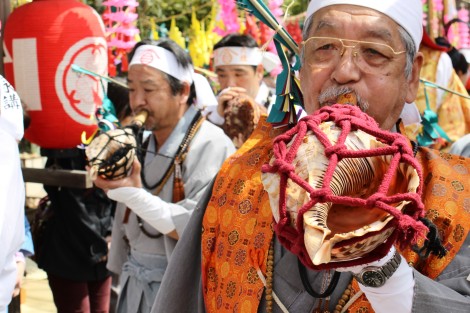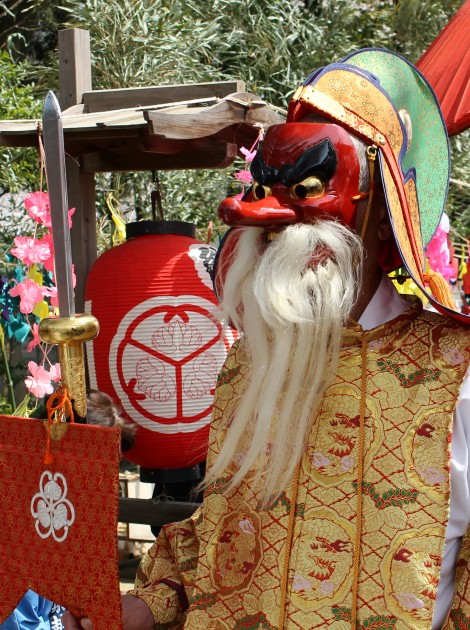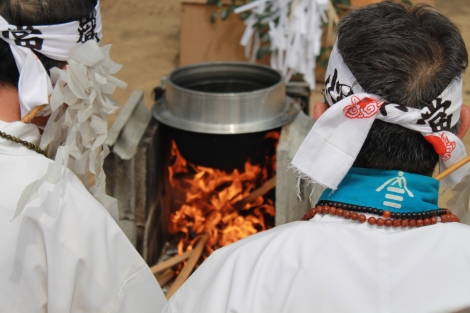Last week, I took the two hour local train from Shinagawa up to Honjo, Saitama to check out an annual festival at the Fukan Reijo (literally, the “numinous site of Fukan”). Fukan was an eighteenth century ascetic who is said to have “opened up the mountain” (開闢) of Ontake. Before this, the mountain had guarded by local ascetics who only climbed it after long periods of seclusion. Through a sudden possession by the Great Avatar Zao (大権現座王) while on Ontake, Fukan was able to climb to the summit, thereby opening it to ordinary people afterwards.
Today, various confraternities (講) based mainly in the prefectures of Saitama and Gunma continue to gather at the Great Spring Festival and other smaller events to pray to Fukan for immediate benefits (現世利益) like the prevention or healing of disease, financial concerns, etc.
Numerous confraternities participate in the festival and each has a specific role to fulfill for the larger program of events. The rituals are largely based on shugen practices dating back to at least the Edo period (1600-1868). They comprise a mix of divination rituals, invitations to deities to enter the ritual space, and ‘extreme’ (in X Games parlance) events traditionally intended to showcase special powers acquired by the ascetics involved.
The festival will be divided into two blog posts: this one will cover the preparations and rituals leading up to the shugen event of saito goma 採燈護摩; and the next will cover the saito goma and events after. Also, special thanks to my advisor, Suzuki Masataka (Professor of Social Sciences at Keio Daigaku) for painstakingly answering questions I had regarding these pictures.

As the name suggests, the Great Spring Festival takes place on April 10th, just as the sakura are in full bloom. In the background is the Fukan Hall.

One of many altars set up for the festival. It consists of mochi (rice cakes), sake, flowers, fresh vegetables and fruit, prepared as offerings.

The events begin with a procession of all specialists to Fukan Hall. Leading the procession is the resident priest of Fukan Reijo.

The procession is announced by the horagai 法螺貝, an instrument made mainly of a single large conch shell, typically used by practitioners of Shugendo.

- Within the procession, a tengu wards off evil spirits with his sword.

Young children, dressed up in costume, are seen as occupying a liminal space between humans and the spirit world. Thus, their presence plays an important role as the practitioners will soon be hoping to engage with this realm.

A confraternity boils water for the yudate 湯立て ritual, where water, once brought to a boil, is flung throughout the area.

The resident priest performs chants and mudra (hand gestures) before the saito goma, a major outdoor goma ritual specific to Shugendo.



